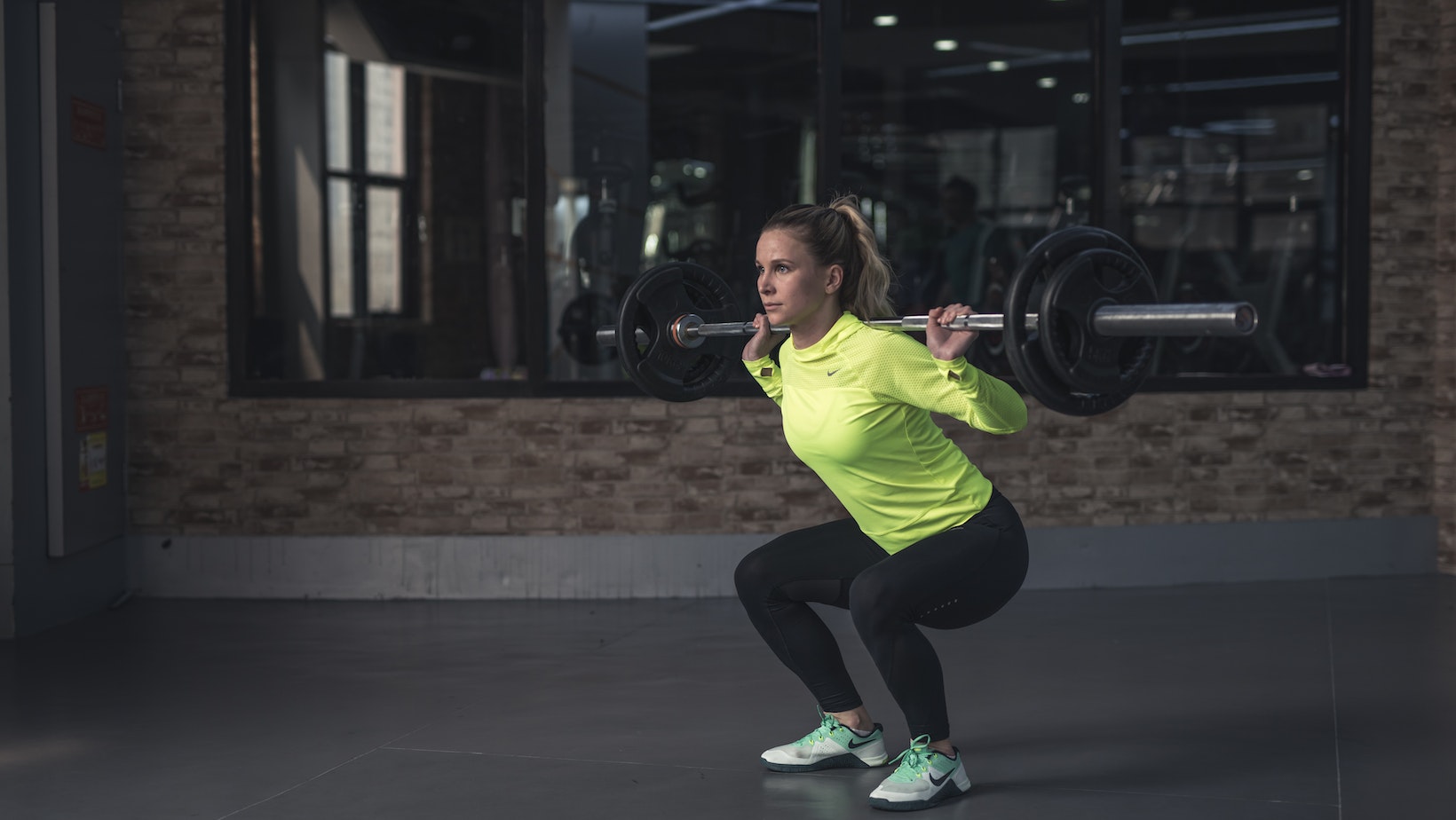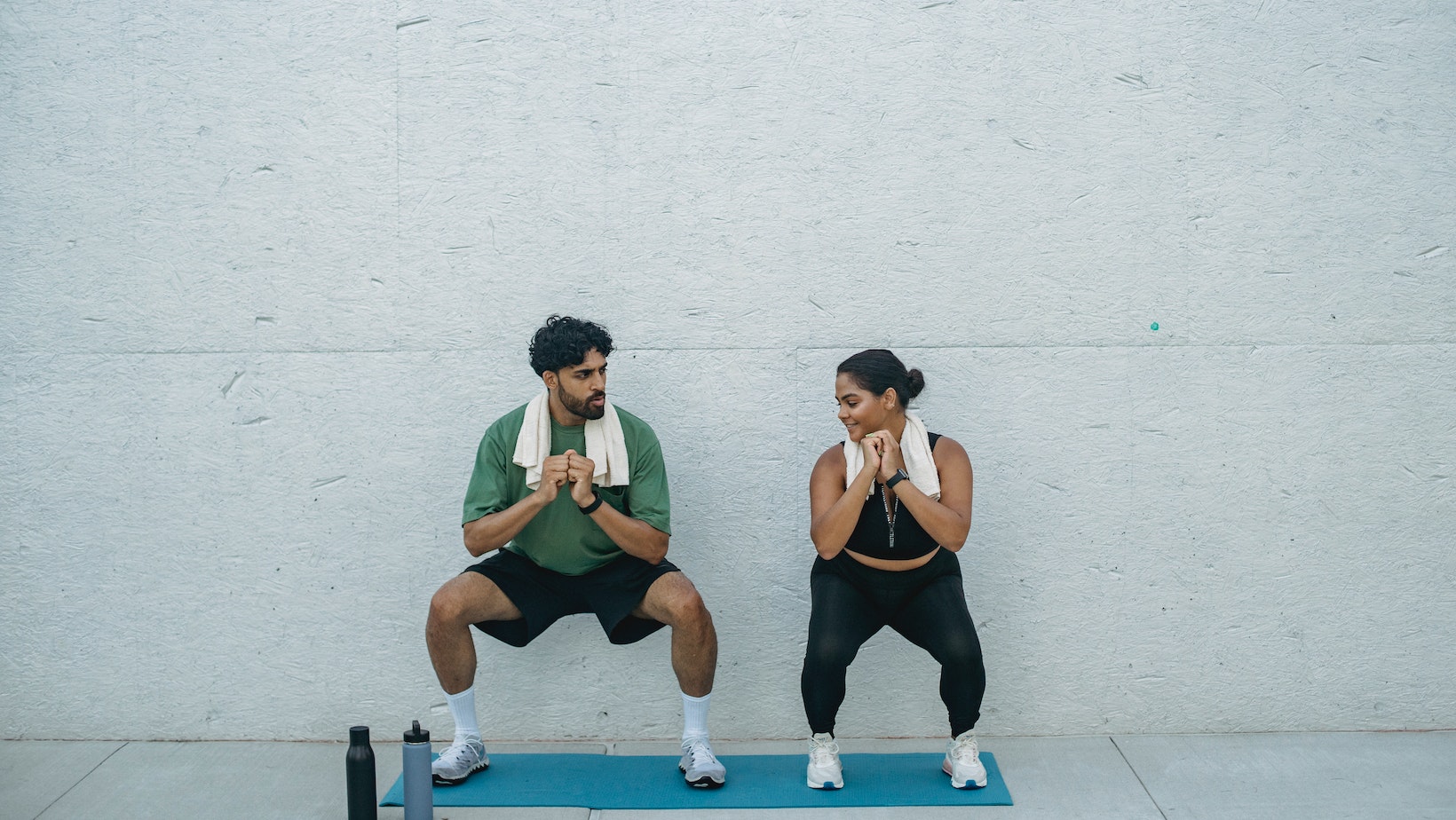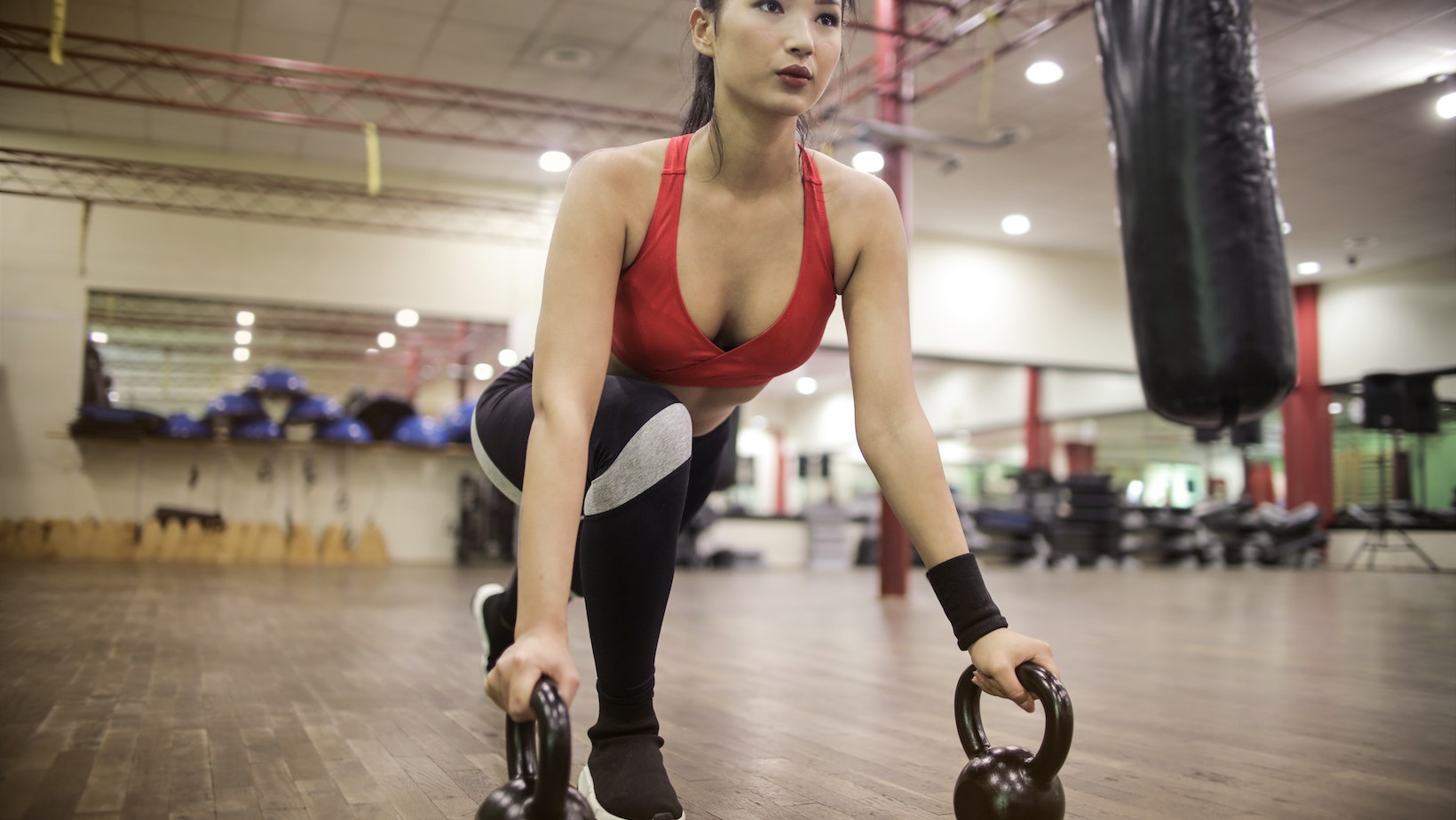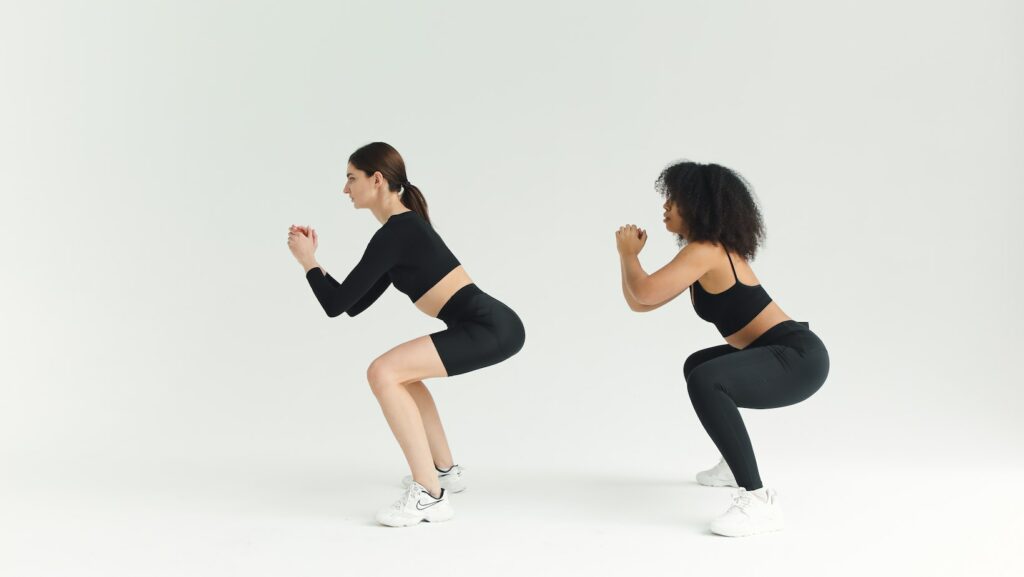
Sumo squats and goblet squats are two popular types of squats that target different muscles and have varying degrees of difficulty. Sumo squats are performed with a wide stance, toes pointing outwards, and a barbell or dumbbell held between the legs. They primarily work the inner thigh muscles, glutes, and quadriceps.
On the other hand, goblet squats are performed with a narrower stance, toes pointing forwards, and a kettlebell held at the chest level. They focus on strengthening the core, upper back, and lower body muscles, including the quadriceps, glutes, and hamstrings. While sumo squats are beneficial for those looking to target the inner thigh muscles, goblet squats are great for overall lower body strength and stability. Both exercises have their benefits, and the choice between them largely depends on personal preferences and fitness goals.
Anatomy and Mechanics of Sumo Squats
Sumo Squats are a variation of the traditional Squat exercise. This particular variation is an effective way to target your legs, glutes, and core muscles. The mechanics of the exercise involve the use of specific feet, hip, knee, and ankle positioning to create the most amount of force to move the load. Doing an analysis of the anatomy and mechanics of the exercise can help you better understand the differences between the two versions.

Muscles Targeted During Sumo Squats
Sumo squats are a variation of traditional squats that primarily target the inner thighs, glutes, and quadriceps muscles.
During a sumo squat, the feet are positioned wider than shoulder-width apart, and the toes point outwards at a 45-degree angle. This stance engages the medial (inner) part of the thigh muscles, and the glutes also work harder. Additionally, the quadriceps muscles are actively involved in both the downward and upward phase of the movement.
Compared to goblet squats, sumo squats can be more challenging due to the wider stance and the emphasis on the inner thigh muscles. However, goblet squats place more demand on the core and upper back muscles due to the weight being held at the chest level.
Choosing between the two types of squats depends on your fitness goals and preferences.
Mechanics of Sumo Squats
Sumo squats are a great exercise for building strength and definition in the lower body. This variation of a squat is as effective as the traditional squat but places more emphasis on the inner thighs and glutes due to the increased abduction of the hip joint.
The mechanics of a sumo squat involve taking a wide stance with the toes pointing outwards at a 45-degree angle. Unlike a traditional squat, where the feet are shoulder-width apart and the toes are pointed straight ahead. The sumo squat primarily targets the glutes, quads, inner thighs, and hamstrings. It is also an effective exercise for increasing hip flexibility and mobility.
Comparing sumo and goblet squats, the goblet squat is less challenging on the hip due to the narrower stance, while the sumo squat allows for more range of motion and deeper abduction of the hip joint. Both exercises provide a great lower body workout, and the choice between the two depends on your fitness goals and personal preferences.
Pro Tip: Incorporate sumo squats into your lower body workout routine for a variation and to work the inner thighs and glutes.
Variations of Sumo Squats
Sumo squats are a variation of traditional squats that put more emphasis on the inner thighs and glutes. Here are four variations of sumo squats that you can incorporate into your workout routine for increased strength and variety:
|
1. Sumo Jump Squats: |
Begin by doing a standard sumo squat with your feet wide apart and toes pointing outwards. Then, jump as high as you can and land softly back in the sumo squat position. |
|
2. Sumo Squat with Calf Raise: |
Perform a standard sumo squat, and when you rise back up, lift onto the balls of your feet and hold for a few seconds before lowering back down. |
|
3. Sumo Squat with Resistance Band: |
Place a resistance band above your knees and perform a standard sumo squat. The resistance will engage your glutes and inner thighs more intensely. |
|
4. Sumo Squat with Dumbbell Curl: |
Hold a dumbbell in each hand and perform a standard sumo squat. At the top of the squat, perform a bicep curl with the dumbbells. |
Sumo squats are similar to goblet squats, but they differ in form, muscle engagement, and difficulty. While sumo squats require a wider stance and work the inner thighs and glutes more, goblet squats work the quads, glutes, and core.

Anatomy and Mechanics of Goblet Squats
Goblet Squats are a great exercise for building strength and mobility in the legs and hips. The anatomy and mechanics involved in goblet squats are important to understand in order to improve your squat performance.
In this section, we will take a closer look at the anatomy and mechanics of goblet squats and compare them to the sumo squat.
Muscles Targeted During Goblet Squats
The goblet squat is a compound exercise that targets multiple muscle groups in the lower body while improving balance, stability, and mobility. This exercise can be performed with a kettlebell, dumbbell, or any other weight that you can grasp with both hands in a goblet position.
The primary muscles targeted during goblet squats are the quadriceps, glutes, and hamstrings. However, this exercise also engages the calves, lower back, and core muscles, making it a highly effective full-body workout.
Now, let’s talk about sumo squats vs goblet squats. While both exercises target the same muscle groups, they differ in terms of posture, stance, and load placement. Sumo squats use a wider stance with the toes pointed out, leading to greater activation of the adductor muscles. On the other hand, goblet squats use a narrower stance with the toes pointing straight ahead or slightly outward and the load placed in front of the body. This results in a greater emphasis on the quadriceps and glutes while also promoting better posture and balance.
To sum up, goblet squats are an excellent exercise for building lower body strength and mobility while engaging multiple muscle groups. While sumo squats and goblet squats are similar exercises, they differ in terms of stance and load placement, making them suitable for different goals and preferences.
Mechanics of Goblet Squats
Goblet squats are a popular exercise, known for building lower body strength, core stability, and mobility. Understanding the anatomy and mechanics of goblet squats is essential to perform the exercise safely and effectively.
|
Key steps to perform goblet squats: |
|
Stand with your feet shoulder-width apart and your toes pointing outwards. |
|
Hold a weight close to your chest, with your elbows pointing towards the floor. |
|
Bend your knees and lower your hips down towards the ground, keeping your spine straight. |
|
Push back up through your heels, squeezing your glutes and thighs at the top of the movement. |
Sumo squats, on the other hand, involve a wider stance and a point out toes position, working the inner thigh while goblet squats work the quads and glutes.
Variations of Goblet Squats
Goblet squats are a popular compound exercise that targets the legs, glutes, and core. Here are three variations of goblet squats that can help you add variety to your exercise routine while also targeting different muscle groups.
|
1. Sumo goblet squat: |
This variation involves taking a wider stance, turning the toes out, and holding the weight closer to the body. Sumo goblet squats primarily work the inner thigh muscles. |
|
2. Bulgarian split squat: |
In this variation, one leg is elevated on a bench or step behind you, and the weight is held against the chest. Bulgarian split squats target the quads, hamstrings, and glutes of the front leg, as well as the stability muscles of the back leg. |
|
3. Goblet squat with a pulse: |
This variation involves holding the squat in the bottom position for a few seconds before coming back up. This adds an extra challenge for the legs and core, helping to increase strength and endurance. |
Pro tip: When performing goblet squats, make sure to keep your back straight and avoid rounding your shoulders to prevent injury. Start with a light weight and focus on perfecting form before increasing the resistance.

Sumo Squat vs Goblet Squat
Squats are one of the most important exercises in the gym, which is why it is essential to know how to properly perform them. Sumo and goblet squats are two of the most popular variations of squat. Both of these variations have their own advantages, so it is important to understand the difference between them.
In this article, we will compare the Sumo and Goblet squats to help you decide which one is best for you.
Primary Muscles Worked
Sumo squats and goblet squats are two popular variations of the traditional back squat, each with its unique set of benefits and primary muscles worked. Sumo squats are performed with a wide stance and the feet turned out at a 45-degree angle. This variation targets the quads, hamstrings, glutes, and inner thigh muscles, making it an excellent choice for building lower body strength and power.
On the other hand, goblet squats are performed holding a kettlebell or dumbbell at chest height. This variation emphasizes core stability, upper back strength, and mobility while targeting similar lower body muscles as the sumo squat. However, goblet squats put less stress on the lower back, making them an excellent choice for beginners or those with back injuries.
When choosing between sumo and goblet squats, consider your fitness goals and any limitations you may have. Both variations are effective for building lower body strength and can be incorporated into your fitness routine based on your specific needs.
Range of Motion
Sumo and goblet squats are both excellent exercises to help build lower body strength. However, they differ in their range of motion and the muscles they target. Sumo squats are performed with a wide stance, with the toes pointing outwards. This stance allows for a deeper range of motion, activating the glutes, quads, and adductor muscles. It is an excellent exercise to develop hip strength and to stabilize the knees.
Goblet squats, on the other hand, are performed with a narrower stance, holding a kettlebell or a dumbbell close to the chest. This exercise targets the quads, glutes, and lower back muscles, and requires less mobility. It’s a great exercise for beginners or those with limited lower body flexibility. The choice of exercise depends on individual goals and fitness levels. Incorporating both sumo and goblet squats into a workout routine can help to maximize lower body strength and muscle development.
Equipment Required
Sumo squats and goblet squats are both popular exercises for targeting the legs and glutes, but they require different equipment to perform.
|
For sumo squats, you’ll need a barbell and weights, as this exercise involves holding the weighted barbell across your shoulders while standing with your feet wider than shoulder-width apart and toes pointing outwards. |
|
In contrast, goblet squats require a kettlebell, dumbbell or medicine ball. You’ll start the exercise by holding the kettlebell or other equipment to your chest and standing with your feet shoulder-width apart. |
Both exercises have their unique benefits and are useful for building strength in different muscle groups. The sumo squat primarily targets the inner thighs, glutes, and hamstrings, while the goblet squat activates your quadriceps, glutes, hamstrings, and core. By alternating between these exercises, you can effectively work out all of the major muscle groups in your lower body.
Pro tip – Consult a personal trainer to determine which exercise is best for your fitness goals and current physical condition.
Benefits and Drawbacks of Sumo Squats
When it comes to squats, sumo squats and goblet squats are two popular variations. Sumo squats target different muscles than a goblet squat and can be beneficial to those looking to target their quads and inner thighs. However, there are some drawbacks to the sumo squat. Let’s take a closer look at the pros and cons of doing the sumo squat.
Benefits of Sumo Squats
Sumo squats are an excellent exercise for building strength and tone in your lower body. This variation of the traditional squat is performed with a wide stance, targeting your glutes, hamstrings, and inner thighs.
Here are some of the benefits of sumo squats:
- Increased muscle activation: Sumo squats target your inner thigh muscles and glutes more effectively than traditional squats, making them an excellent addition to your lower-body workout routine.
- Improved flexibility: Regularly performing sumo squats can help to increase your overall flexibility and mobility, specifically in your hips and groin.
- Lower risk of injury: The wide stance of sumo squats promotes proper form and alignment, reducing the risk of injury to your knees and lower back.
When comparing sumo squats with goblet squats, there are a few things to consider. While sumo squats target your inner thighs and glutes more effectively, goblet squats place more emphasis on your quads and core. Additionally, goblet squats require less flexibility and are easier to perform for beginners. However, both exercises are valuable additions to any lower-body workout routine.
Pro Tip: Focus on proper form and alignment when performing sumo squats to maximize the benefits and reduce the risk of injury.
Drawbacks of Sumo Squats
Sumo squats, while an effective lower body exercise, can pose certain drawbacks that make them unsuitable for some individuals. One key disadvantage of sumo squats is that they can put a strain on the lower back, leading to discomfort or pain. This is a result of the wide stance used in sumo squats, which can cause the lower back to arch excessively. Additionally, sumo squats may not be suitable for those with knee or ankle issues, as the wider stance can place additional strain on these joints.
Goblet squats, on the other hand, offer a viable alternative to sumo squats, as they provide similar benefits while reducing the strain on the lower back and joints. Unlike the wide stance used in sumo squats, goblet squats employ a narrower stance that allows for a more natural alignment of the spine. This, combined with the additional support provided by holding a weight at the chest, makes goblet squats a safer and more effective exercise for many individuals.
Ultimately, the choice between sumo and goblet squats will depend on personal preference and physical ability. It is important to consider the benefits and drawbacks of each exercise when selecting the one that is best suited for your fitness goals and needs.
Benefits and Drawbacks of Goblet Squats
The goblet squat is a great alternative to the traditional barbell squat, offering plenty of benefits for those with little to no squatting experience. It helps to strengthen the quads, glutes, and hamstrings while improving balance and stabilizing the core. Additionally, it helps to improve hip and ankle mobility, making you more efficient in other exercises.
However, like any exercise, there are some drawbacks to the goblet squat. Let’s look at these so you can decide if this exercise is right for you.
Benefits of Goblet Squats
Goblet squats offer numerous benefits for people looking to improve their lower body strength and overall fitness level. Unlike sumo squats, goblet squats place less stress on your lower back while targeting the quadriceps, glutes, calves, and core.
Here are some benefits of goblet squats:
|
1. Improved flexibility and mobility in the hips and knees. |
|
2. Increased lower body strength and muscle mass. |
|
3. Better posture and balance. |
|
4. Reduced risk of injury as compared to other types of squats. |
However, goblet squats also have some drawbacks. They may not be as effective in building pure strength and power as other types of squats, such as sumo squats. Additionally, goblet squats may not be suitable for people with mobility or flexibility issues.
Comparing sumo squats and goblet squats, while sumo squats do offer some unique benefits like increased activation of the inner thighs and lower back muscles, goblet squats are still the better option for beginners and people looking for a safer way to perform squats.
Pro Tip: To enjoy the best of both worlds, try incorporating both goblet squats and sumo squats in your leg day routine.

Drawbacks of Goblet Squats
Goblet squats have become a popular form of exercise in recent years, but like many workouts, they come with drawbacks that are important to consider before adding them to your routine.
|
Drawbacks of Goblet Squats include: |
|
Limited resistance: As goblet squats require you to hold a kettlebell or dumbbell, you may hit plateaus in your workout progress as it becomes difficult to increase weight. |
|
Limited muscle engagement: Goblet squats do not engage as many muscle groups as other squat variations, such as sumo squats or barbell squats, which can limit the effectiveness of the workout. |
|
Improper form: Performing goblet squats with improper form can result in back pain, neck tension, or other injuries. |
It is important to compare the benefits and drawbacks of goblet squats versus sumo squats and other variations to determine which exercise is best suited for your fitness goals and limitations.
Choosing Between Sumo and Goblet Squats
The Sumo Squat and the Goblet Squat are two common variations of the traditional squat exercise. But before you decide which one to use, you should get an understanding of the differences between the two. In this article, we will compare and contrast the two variations, and discuss the benefits and drawbacks of each.
Goals and Objectives
The goal of comparing sumo and goblet squats is to help you choose the right type of squat for your fitness goals and objectives. Sumo squats and goblet squats are both effective lower body exercises that work your glutes, quads, and hamstrings. However, there are some differences between them you should know before deciding which one to do:
Sumo squats are done with a wide stance and toes pointing outward. This makes them ideal for targeting your inner thighs and putting less strain on your knees. Sumo squats are also great for improving your hip mobility and flexibility.
Goblet squats, on the other hand, are done holding a weight close to your chest while performing a squat. They help you develop strength, balance, and coordination, and are a great exercise for beginners. Unlike sumo squats, goblet squats are more versatile and can be done with a narrower stance if needed.
Whether you choose sumo or goblet squats, make sure you focus on proper form and gradually increase the weight to avoid injury.
Pro Tip: Consider adding both sumo and goblet squats to your leg day routine to reap the benefits of both exercises.
Body Type and Anatomy
When it comes to choosing between Sumo and Goblet squats, understanding your body type and anatomy plays a significant role. Both these exercises are different and offer unique benefits. Sumo squats are ideal for people with wider hips or those with limited ankle mobility. It targets the inner thighs and glutes while providing less stress on the knees.
Goblet squats, on the other hand, are perfect for those who are new to squats or have trouble performing a proper squat. It is also ideal for people with narrow hips and longer torsos as it maintains an upright position while performing the exercise, which puts less stress on the lower back. Performing these squats correctly is crucial to avoid any injury. So, make sure to choose the squat that suits you based on your anatomy and start slow to avoid any overexertion.
Training Experience and Level
Both Sumo and Goblet squats are great exercises to build lower body strength, but the choice between the two depends on your training experience and level. Sumo squats are ideal for individuals with wider hips and those looking to target their inner thighs for greater activation. This exercise requires proper form, balance, and conditioning for optimal results.
Goblet squats, on the other hand, are ideal for beginners and those with limited equipment. This exercise is less complex but still provides great lower body activation.
Therefore, if you are a beginner or have limited equipment, start with goblet squats to build your endurance and form. If you have wider hips or more experience, try sumo squats to take your lower body activation to the next level.
